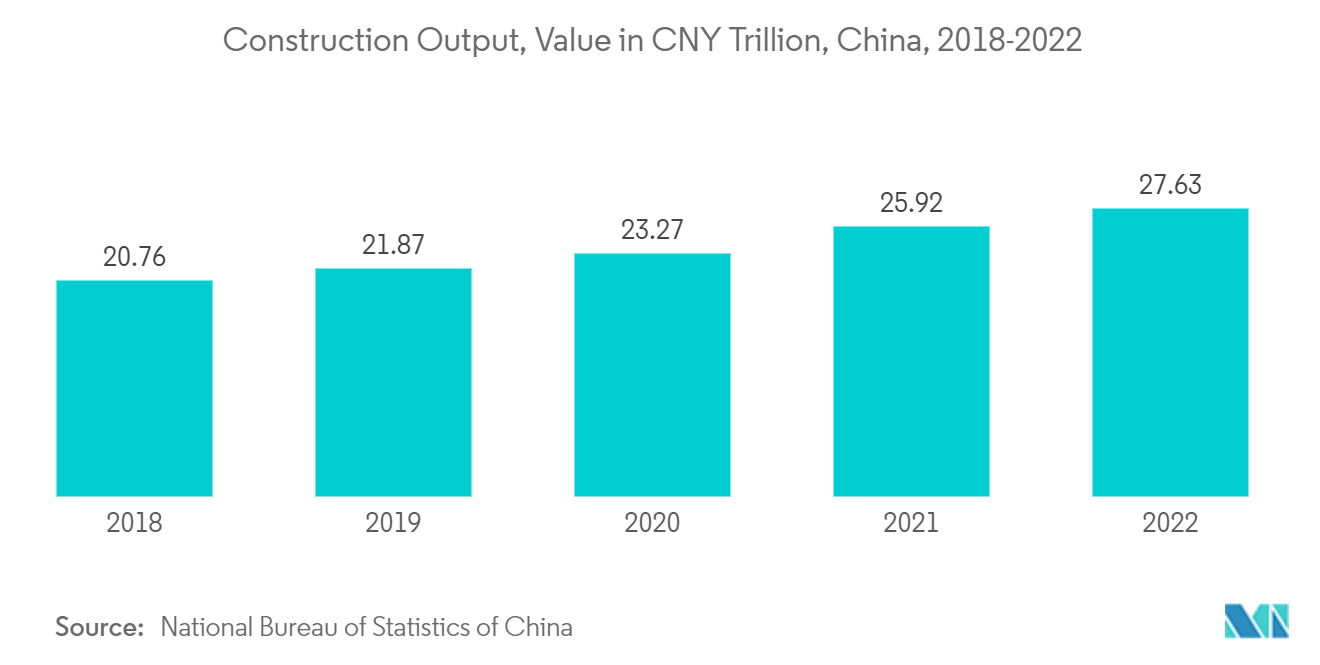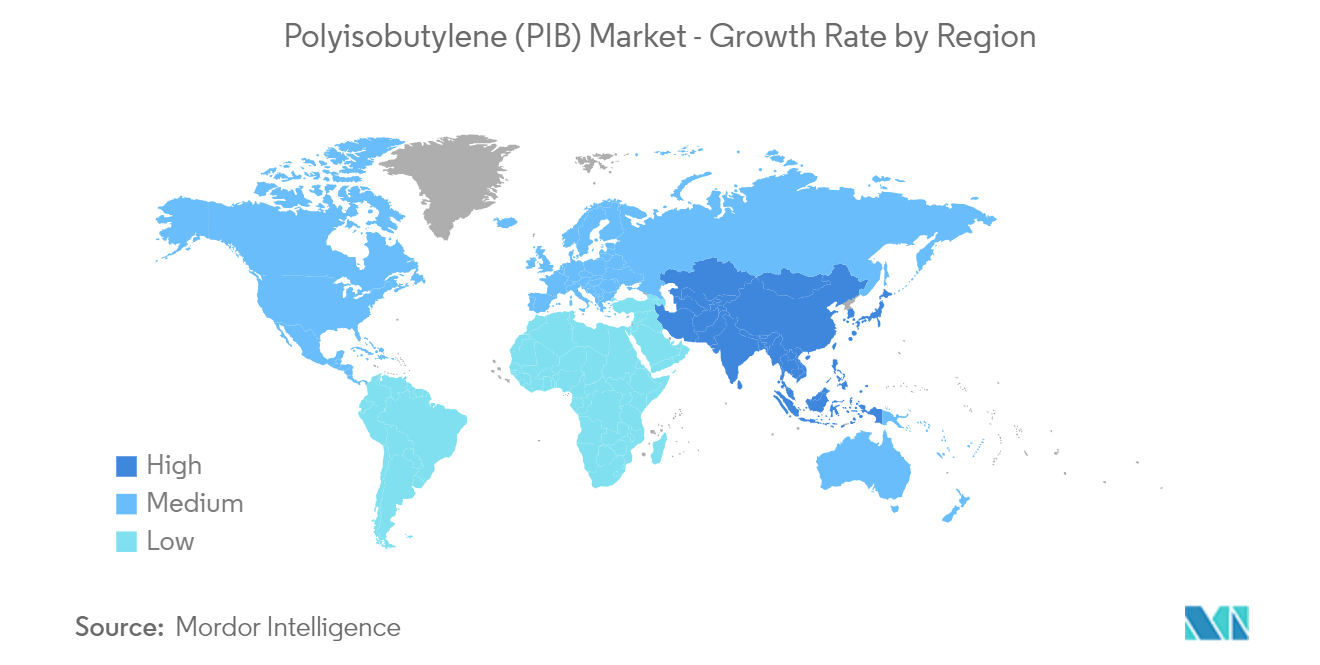Market Trends of Polyisobutylene (PIB) Industry
Increasing Demand from Adhesives and Sealants Industry
- The adhesive and sealant industry is anticipated to witness significant demand during the forecast period. Major applications of polyisobutylene in the adhesive and sealant industry are to seal joints, to seal and protect electrical wirings, and to protect body cavities from moisture.
- Polyisobutylene is used in adhesive systems in the form of pressure-sensitive and hot-melt adhesives. It is used due to its tackiness, flexibility, and low cohesive strength, mainly in PSAs and hot-melt adhesives.
- In June 2023, Henkel announced the addition of a new adhesive manufacturing facility in China. The new manufacturing facility of Henkel Adhesive Technologies in the Yantai chemical industry park in Shandong province, China. The new plant, 'Kunpeng,’ will cost approximately CNY 870 million (USD 119 Million). The new plant will increase Henkel’s production capacity of high-impact adhesive products in China and further optimize the supply chain to meet the increasing demand from domestic and foreign markets.
- In May 2023, Jowat, the adhesive manufacturer, announced to expand its presence in Asia-Pacific with the establishment of its own adhesive center in China. The new adhesive center in Asia will have a surface area of more than 11,000 sq meters and is planned to be finished by 2023.
- Growth in residential construction in the Asia-Pacific region is expected to act as a driver for pressure-sensitive and hot melt adhesives. Polyisobutylene sealant is used for damp proofing, rubber roof repair, and maintenance of roof membranes.
- The Asia-Pacific accounted for the largest market for office construction across the globe. The reports by Cushman & Wakefield state the Asia-Pacific region is likely to incorporate office construction at an average of 120 million square feet annually till 2030. Thus, with the increasing number of office activities, the demand for polyisobutylene in office supplies will also significantly increase.
- Various construction firms consider Europe’s long future for office spaces. Also, several companies have invested in construction projects in the commercial sector, driving the demand for polyisobutylene.
- China is one of the leading countries in office space construction. The construction of office spaces such as Wuhan Fosun Bund Center T1 in China is expected to boost the market studied. Construction work for the project started in Q3 2021 and is forecasted to complete in Q4 2025.
- Also, according to the National Bureau of Statistics of China, China's construction output peaked in 2022 at a value of about USD 4.11 trillion. As a result, these factors tend to increase the market demand.
- The adhesives and sealants industry is expected to dominate the global polyisobutylene market over the forecast period.

Asia-Pacific Region to Dominate the Market
- Asia-Pacific is expected to be the dominant market for polyisobutylene during the forecast period. This is because the region dominates the market for applications such as adhesives and sealants, lubricants, fuel additives, and among others.
- In March 2023, Pidilite announced the manufacture of Jowat’s hot melt adhesive in India. The adhesives will be produced at Pidilite's manufacturing plant in Vapi, Gujarat. The company further announced that the adhesive will be manufactured under the Pidilite brand.
- Polyisobutylene is widely used in lubricants for modifying or improving the viscosity of the lubricant formulations to the desired final viscosity. The lubricants market is currently witnessing an increasing demand for high-performance lubricants owing to their better and improved properties, such as reduced flammability, reduced gear wear, and increased service life.
- Polyisobutylene is added to fuel to improve the viscoelastic property. Derivatives of polyisobutylene are used as ash-less dispersants (such as PIBSA) to minimize deposits and prevent oil thickening and formation of sludge.
- Thus, the growing automotive industry is expected to boost the market demand. China is the largest manufacturer of automobiles in the world. The country’s automotive sector has been shaping up for product evolution, with the country focusing on manufacturing products to ensure fuel economy while minimizing emissions, owing to the growing environmental concerns.
- According to OICA (The Organisation Internationale des Constructeurs d'Automobiles), automobile production and sales reached 27.021 million and 26.864 million, respectively, in 2022, up 3.4% and 2.1% from the previous year.
- Thus, rising demands from the polyisobutylene applications mentioned above are expected to drive the growth of the market in the Asia-Pacific region.

